
Applications of Si/B/N/(C) ceramics
Ceramic coatings and infiltrations
Ceramic parts made from carbon containing materials, e.g. graphite, carbon fiber and CFC (carbon fiber-reinforced carbon), are already applied in many fields. However, low oxidation stability of carbon limits their suitability for many applications. Fortunately, SiBNC coating of carbon containing materials overcome these limitations.
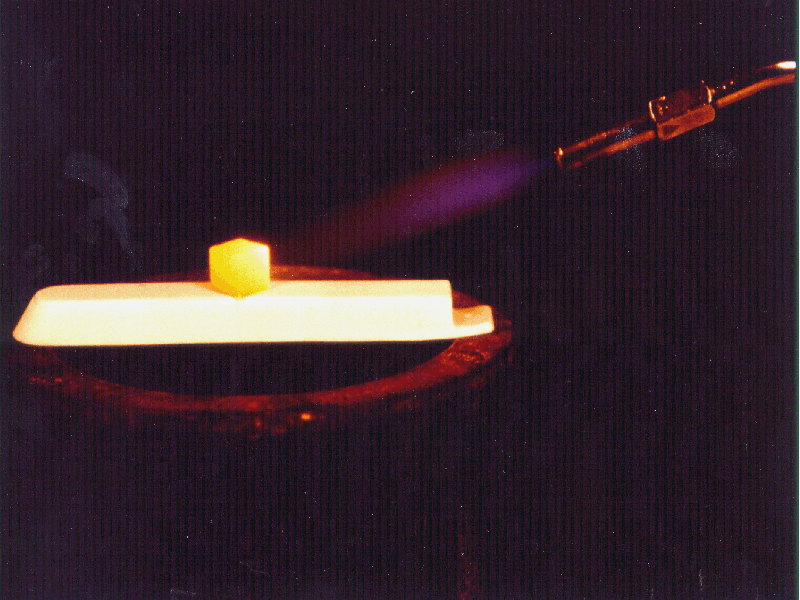 |
Graphite cube coated with SiBN3C in oxyhydrogen flame |
Fibers
SiBN3C ceramic fibers are spun from predensified N-methylpolyborsilazane, pyrolyzed at 1500 °C. They have a very smooth surface and very constant diameter. They keep the amorphous state at least up to 1800 °C without any significant microstructural changes, resulting in remarkably good high-temperature creep-resistance. Even better, the formation of only a thin and crack-free amorphous SiO2 layer, when exposed to air at 1500 °C, causes considerably larger oxidation stability compared to those of the standard non-oxide materials, e.g. Si3N4 and SiC.
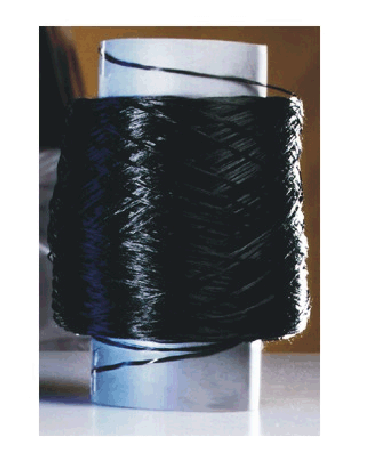 |
SiBN3C fibers prepared at Fraunhofer Institute for Silicate Research, Würzburg |
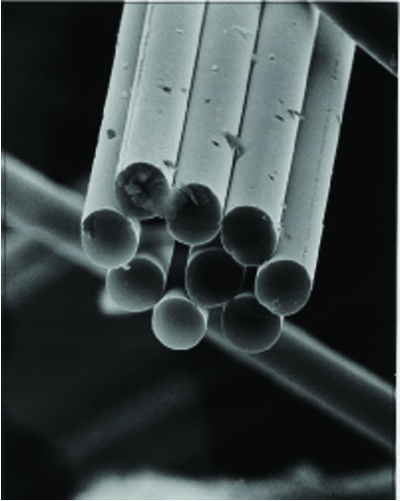 |
The SEM picture of SiBN3C fibers |
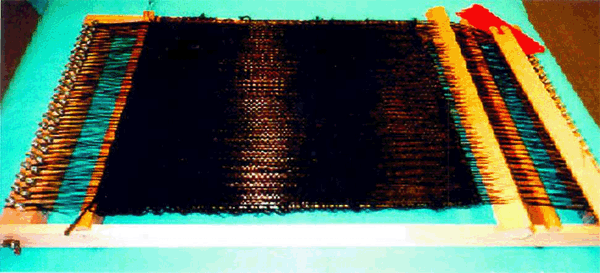 |
SiBN3C fiber weavings for ceramic matrix composites |
 |
Movie: Example for the resistivity of Si/B/N/(C)- Fibers. |
Phosphors for LEDs
Thermally and chemically stable and highly pure amorphous Si3B3N7 ceramic surprisingly serves as a host matrix for activators to be used as a new class of phosphors for LED applications*. Unlike the crystalline hosts, there is no need to replace any ion from the host lattice with activators. This brings a significant advantage over conventional phosphors that more than one activator ions can easily be incorporated into amorphous matrix, which enables tuning the emission color. Even better, the synthesis method, i.e., the polymer route, may enables to coat LEDs without requiring any resin, which is impossible with conventional solid state routes.
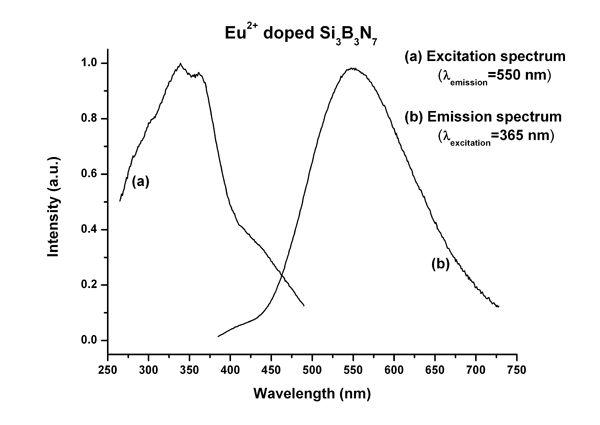 |
Photoluminescence spectrum of Eu2+ doped amorphous Si3B3N7 ceramic |
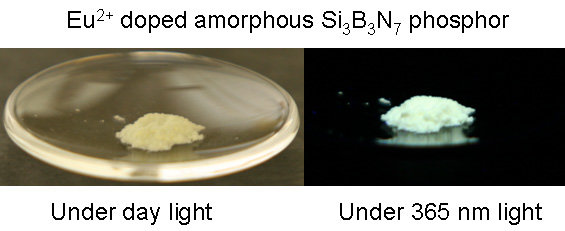
* H. Cakmak, M. Jansen, German Patent Application, DE 10 2006 051 757.1, 2006.